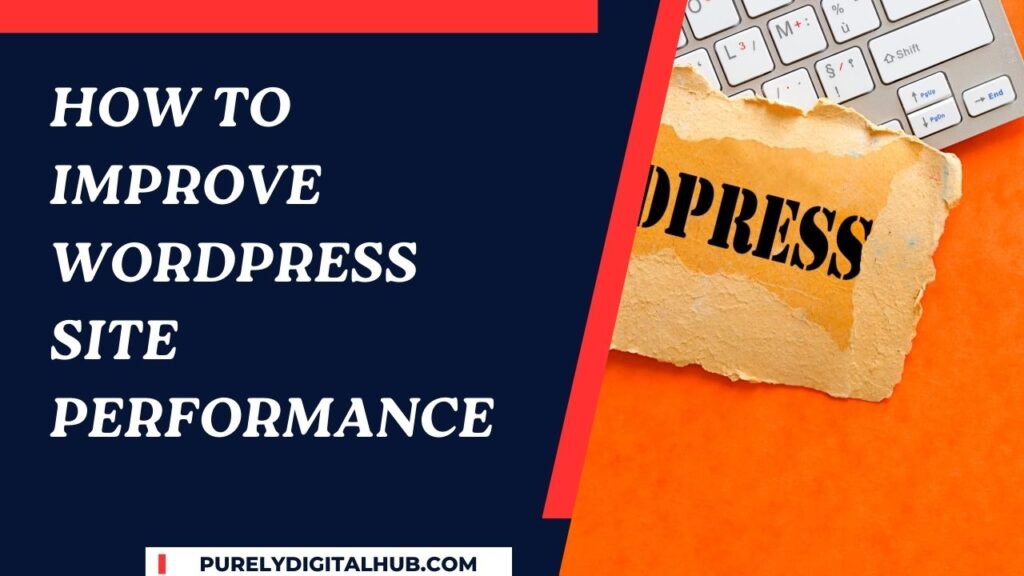A fast and efficient WordPress site enhances user experience, improves search engine rankings, and boosts overall engagement. Slow-loading websites frustrate visitors and can significantly impact conversion rates. This guide outlines actionable steps to improve WordPress site performance and ensure optimal functionality.
1. Choose a Reliable Hosting Provider
Your hosting provider plays a critical role in your site’s performance. Opt for a hosting plan tailored to your needs:
- Shared Hosting: Affordable but may slow down during high traffic.
- Managed WordPress Hosting: Optimized for WordPress sites with better speed and reliability.
- VPS or Dedicated Servers: Ideal for high-traffic websites requiring robust resources.
| Hosting Type | Benefits |
|---|---|
| Shared Hosting | Cost-effective for small sites |
| Managed Hosting | WordPress-optimized performance |
| VPS/Dedicated Servers | High scalability and resource control |
2. Use a Lightweight Theme
A bloated theme can significantly slow down your website. Choose a theme designed for performance:
- Minimalist Design: Avoid unnecessary features and scripts.
- Optimized Code: Ensure the theme follows WordPress coding standards.
- Responsive Layout: Guarantee fast performance across devices.
Examples of lightweight themes include Astra, GeneratePress, and Neve.
3. Optimize Images
Large, uncompressed images can drastically reduce load times. Optimize images by:
- Compressing Files: Use tools like TinyPNG or WP Smush to reduce file sizes.
- Choosing the Right Format: Use WebP or JPEG for photos and PNG for graphics.
- Lazy Loading: Load images as users scroll down the page.
4. Leverage Caching
Caching stores static versions of your website, reducing the need to reload all resources for returning visitors. Implement caching using:
- Plugins: Install caching plugins like WP Super Cache or W3 Total Cache.
- Server-Side Caching: Use hosting providers offering built-in caching solutions.
- Content Delivery Network (CDN): Distribute cached content globally for faster delivery.
| Caching Method | Benefit |
| Plugin-Based Caching | Easy to set up |
| Server-Side Caching | Optimized for specific hosting |
| CDN | Reduces latency for global visitors |
5. Minify CSS, JavaScript, and HTML
Minification removes unnecessary characters from your site’s code, improving load times. Use tools like:
- Autoptimize: Automates CSS, JS, and HTML minification.
- Asset CleanUp: Optimizes and reduces file sizes for faster loading.
6. Limit Plugins and Use Only Essential Ones
Excessive plugins can slow down your site. Optimize plugin usage by:
- Deactivating Unused Plugins: Regularly review and remove unnecessary plugins.
- Choosing High-Quality Plugins: Avoid poorly coded or outdated plugins.
- Combining Functions: Use multi-purpose plugins like Jetpack to reduce redundancy.
7. Enable Gzip Compression
Gzip compression reduces the size of your site’s files, improving load times. Most modern servers support Gzip, and it can be enabled using:
- Plugins: Use WP Rocket or W3 Total Cache to activate Gzip.
- Server Settings: Configure .htaccess for Apache servers to enable compression.
8. Optimize Your Database
Over time, your database accumulates unnecessary data. Optimize it by:
- Cleaning Up Revisions: Limit post revisions or delete outdated ones.
- Removing Spam Comments: Regularly purge spam and trash items.
- Using Plugins: Tools like WP-Optimize automate database optimization.
9. Regularly Update WordPress, Themes, and Plugins
Outdated software can slow down your site and pose security risks. Keep your WordPress core, themes, and plugins updated to:
- Fix Bugs: Address known issues affecting performance.
- Improve Compatibility: Ensure seamless integration with the latest technologies.
- Enhance Security: Protect your site from vulnerabilities. Utilize a VPN for Brave browsing to enhance security while updating your WordPress core, themes, and plugins.
10. Monitor Performance and Address Bottlenecks
Regularly evaluate your site’s performance to identify and resolve issues. Tools to use include:
- Google PageSpeed Insights: Offers suggestions to improve load times.
- GTmetrix: Provides detailed performance analysis.
- Pingdom: Tracks page load speeds and performance trends.
| Tool | Key Feature |
| Google PageSpeed Insights | Offers actionable improvement tips |
| GTmetrix | Detailed speed and optimization metrics |
| Pingdom | Real-time performance monitoring |
Conclusion
Improving WordPress site performance is an ongoing process that requires careful planning, regular monitoring, and optimization. From choosing the right hosting provider to leveraging caching and optimizing images, these strategies ensure a fast, user-friendly website that keeps visitors engaged and boosts search engine rankings. By implementing these best practices, you can create a WordPress site that performs at its peak and supports your business goals.
